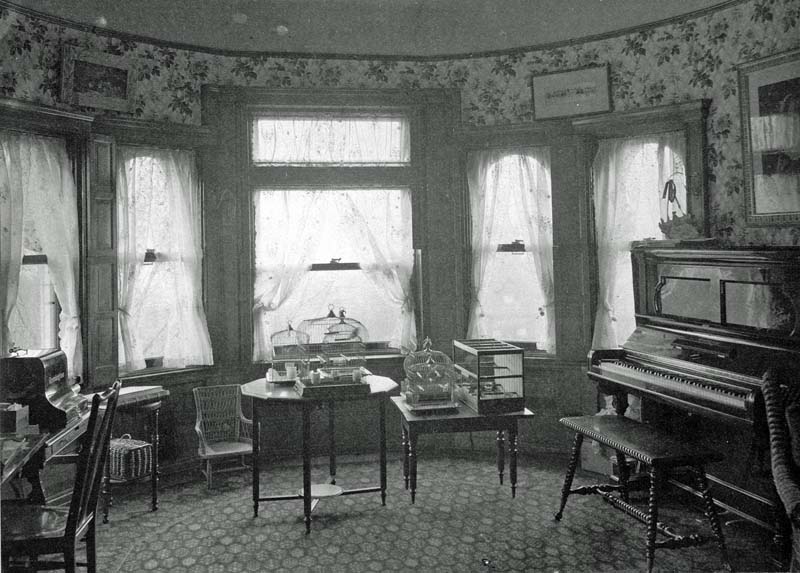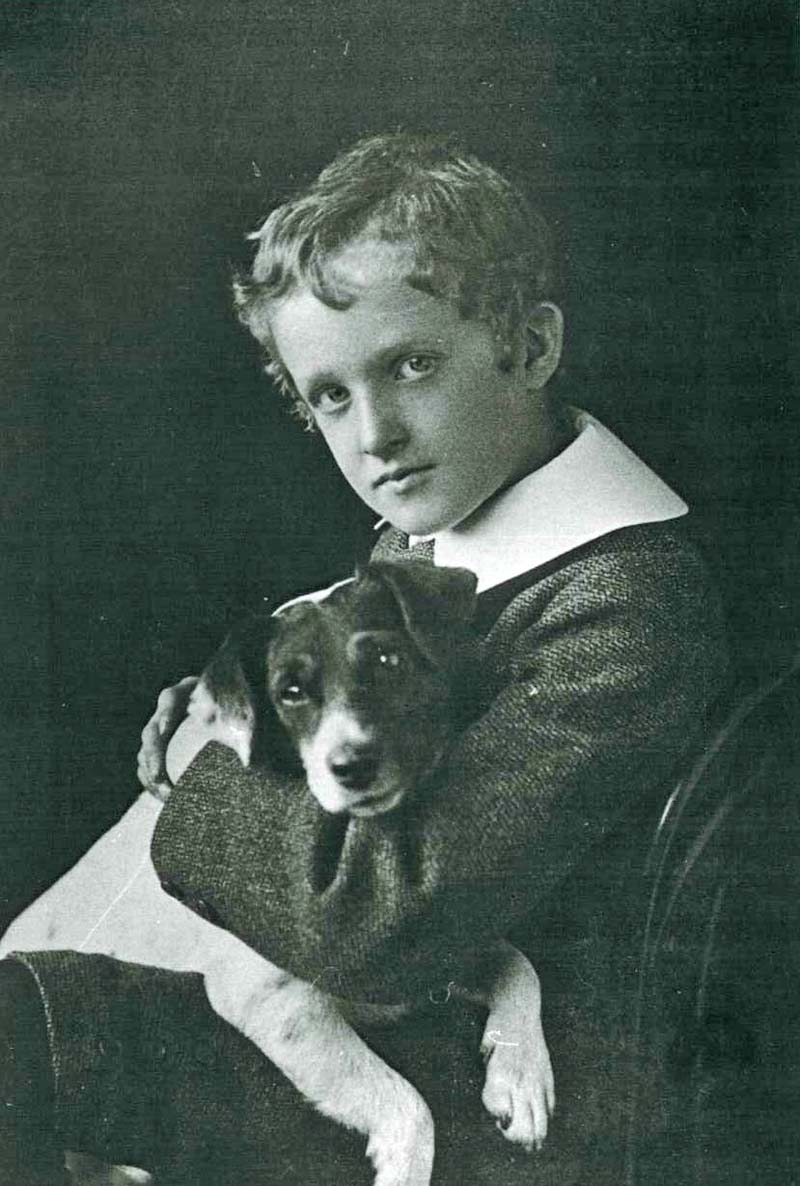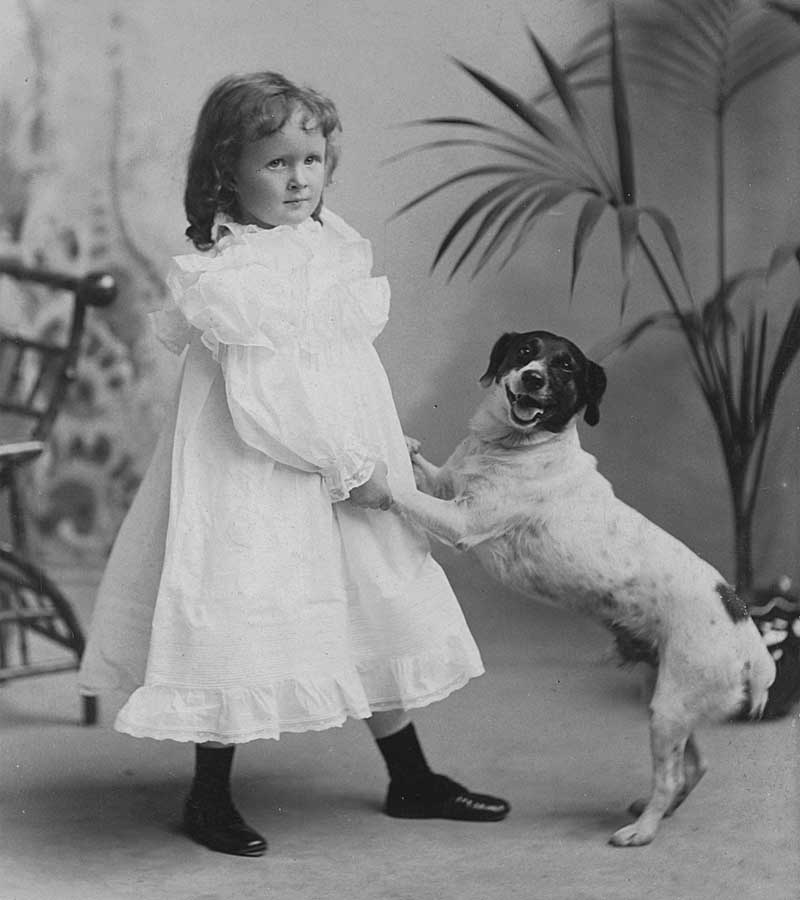As we prepare to open our new photography exhibition, Street Photography to Surrealism: The Golden Age of Photography in France, 1900-1945, it is interesting to take a look at photographs taken by the Frick family at the turn of the 20th century.
Photography played a big role in life at Clayton, and these images provide valuable documentation for aspects of daily life. Son Childs Frick received his first camera at a young age, and his photos of the rooms in Clayton taken around 1900 have been invaluable in restoring and interpreting the home. Another popular photography subject for the family was their pets, particularly the birds that were loved by Helen Clay Frick and the family dogs.
Today we think of pets as beloved members of the family, but this modern close relationship between families and animals developed in the Victorian Era. Before the late 19th century, dogs and cats generally earned their keep by hunting, herding or guarding. Aside from caged birds, pets rarely came into the home. The Frick household perfectly demonstrated the changing role of animals and of the accompanying pet industry boom. Clayton was home to many popular Victorian pets, including songbirds, cats, ponies and dogs, and so-called “pocket pets,” such as guinea pigs.
In a time before radio and electronic music, birds were very popular for the cheery songs they provided. Helen loved her seven canaries, calling them the family of Madame and Monsieur Mignon (mignon means “darling” in French). The art in her bedroom included paintings of birds, which can still be seen in Clayton today. This 1901 photo of Clayton’s third floor playroom shows numerous bird cages in front of the sunny windows.

Cats and dogs both lived at Clayton, although cats get little mention in the historic record. Dogs, however, were big favorites. Some of the known canine companions included Laddie, Pilot, young Helen’s trendy Japanese spaniel, Koty, a cocker spaniel named Fudgie, and Brownie. Brownie is perhaps the most documented of the Frick dogs. Both Childs and Helen Frick posed for photographs with Brownie (see below), and he was also photographed on his own. Allowed to sleep in the house, Brownie was known to beg for roast beef and ice cream at the dining room table. He traveled with the Fricks to the shore after their daughter Martha’s death in 1891. According to many family letters written to Childs while he was away at school from 1893-1896, Brownie was not the best-behaved dog. Several times it was reported that he bit people, once leading Mr. Frick to pay an injured man $5.00. On the other hand, he was very patient with little Helen and lay at Mrs. Frick’s feet in the library as she wrote her evening letters to her son.


All images courtesy of The Frick Collection/Frick Art Reference Library.
Today we think of pets as beloved members of the family, but this modern close relationship between families and animals developed in the Victorian Era. Before the late 19th century, dogs and cats generally earned their keep by hunting, herding or guarding. Aside from caged birds, pets rarely came into the home. The Frick household perfectly demonstrated the changing role of animals and of the accompanying pet industry boom. Clayton was home to many popular Victorian pets, including songbirds, cats, ponies and dogs, and so-called “pocket pets,” such as guinea pigs.
In a time before radio and electronic music, birds were very popular for the cheery songs they provided. Helen loved her seven canaries, calling them the family of Madame and Monsieur Mignon (mignon means “darling” in French). The art in her bedroom included paintings of birds, which can still be seen in Clayton today. This 1901 photo of Clayton’s third floor playroom shows numerous bird cages in front of the sunny windows.
Cats and dogs both lived at Clayton, although cats get little mention in the historic record. Dogs, however, were big favorites. Some of the known canine companions included Laddie, Pilot, young Helen’s trendy Japanese spaniel, Koty, a cocker spaniel named Fudgie, and Brownie. Brownie is perhaps the most documented of the Frick dogs. Both Childs and Helen Frick posed for photographs with Brownie (see below), and he was also photographed on his own. Allowed to sleep in the house, Brownie was known to beg for roast beef and ice cream at the dining room table. He traveled with the Fricks to the shore after their daughter Martha’s death in 1891. According to many family letters written to Childs while he was away at school from 1893-1896, Brownie was not the best-behaved dog. Several times it was reported that he bit people, once leading Mr. Frick to pay an injured man $5.00. On the other hand, he was very patient with little Helen and lay at Mrs. Frick’s feet in the library as she wrote her evening letters to her son.
All images courtesy of The Frick Collection/Frick Art Reference Library.




